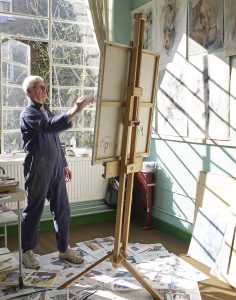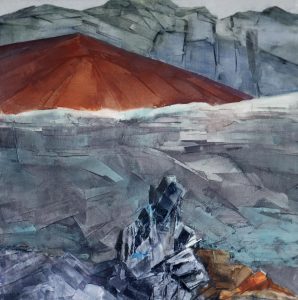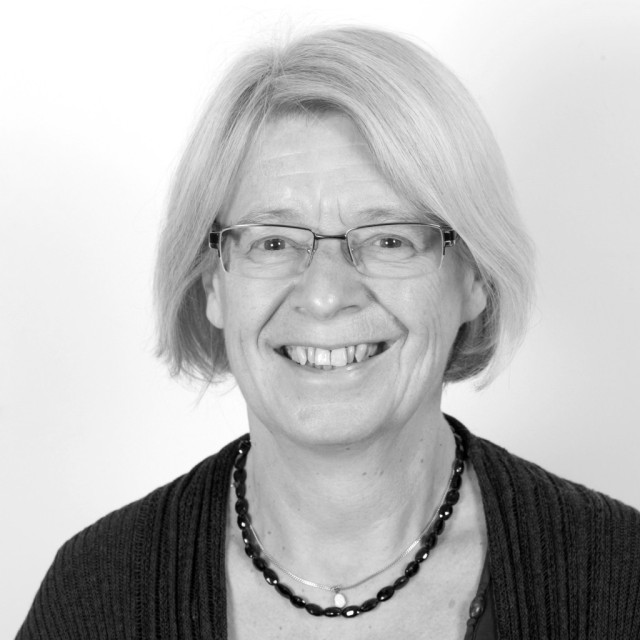LSE London recently welcomed Emeritus Professor of Urban Planning, Andy Thornley back for a lunch visit. Andy is an LSE alumnus and was the Director of the Planning Studies programme from 1994-2009. His work has been influential across planning circles for many years. In 2011, he published the second edition of Planning World Cities: Globalisation and Urban Politics (Palgrave, 2011) along with Peter Newman. The book analyses the role planning has played in how cities respond to globalisation. It also emphasises the importance of diverse planning practices to tackle interconnected issues. Andy’s latest interests are artistic – painting, to be exact, mainly using oil and charcoal. Check out his website here. And his Instagram here.
 LSE London’s Ulises Moreno-Tabarez (UMT) caught up with Prof Thornley (AT) to learn about his work and his plans.
LSE London’s Ulises Moreno-Tabarez (UMT) caught up with Prof Thornley (AT) to learn about his work and his plans.
UMT: Do you have some thoughts on some new keywords, arguments, and counterarguments that planning students should look out for in debates about ‘world cities’?
AT: I think that the word that I would pick out from your question is ‘new’. Perhaps we need to explore what is ongoing and what is new in the development of ‘world cities’? The underlying processes of the globalised market, in the form of investors and developers seeking out new opportunities to operate, continues as a dominant force. A ‘new’ aspect to look at might be whether these opportunities are being found in different cities and locations. Other new dimensions to investigate could include whether a political shift in certain nation-states towards nationalism and protectionism, and hence a rhetorical aversion to globalisation, changes the conditions within which the global economic forces operate. Another aspect to explore could be the degree to which increasing concern over environmental issues leads to a greater curbing of market processes. For example, will China, where world cities have grown dramatically even since the publication of our book, start taking a serious approach to innovative environmental policies? How would this transform city development not only in China but everywhere? Will there be a response to Extinction Rebellion? All these questions open up debates particularly about whether the form of world cities will evolve.
UMT: We are currently working on a project for the ‘Examination in Public’ of the London Plan. One of the observations we’ve made is the need for coherent spatial policy to include the duty to cooperate between boroughs. Looking through our archives, I found a Discussion Paper (2002) you co-wrote with other LSE members discussing the notion of policy integration. This included developing coherent strategies in planning and environmental policy domains to promote London’s wellbeing. Has this been done? If not, what is missing?
AT: Hmm that discussion paper seems a long time ago! Well from my current perspective as a mere London resident and artist it doesn’t feel as if much progress has been made – except on a few isolated cases such as the Mayor’s anti-pollution strategy. However, a bigger overarching issue in recent years it seems to me has been the national policy on austerity. Boroughs hardly have the resources to carry out basic functions and are struggling to survive. The response has often been further outsourcing and privatisation and this has made any coherent strategic approach even more difficult to achieve.
 UMT: Your artistic work is impressive! It is fascinating to see someone go from a planning environment to an artistic one. I have a performance studies background and would love to find ways to incorporate my artistic and academic interests in my future work. Along these lines, I was interested in a couple of the themes that you work with, namely Faroe Islands and Steelwork Paintings.
UMT: Your artistic work is impressive! It is fascinating to see someone go from a planning environment to an artistic one. I have a performance studies background and would love to find ways to incorporate my artistic and academic interests in my future work. Along these lines, I was interested in a couple of the themes that you work with, namely Faroe Islands and Steelwork Paintings.
In Faroe Islands, you say you’re responding to the wild and remote environment and the atmospheric conditions. Indeed, the environment and conditions depicted in these paintings seemed to melt into one another. What in your urban planning background calls you to the wild?
AT: For me I don’t think there was an evolution from my planning work to my current emphasis on visual expression. It was rather a reaction against the limitations of one kind of thinking and an acknowledgement that I had spent my working life on an academic and analytical approach. I had always felt deprived of the opportunity to be more creative – as I was in the top stream at Grammar School, I was never allowed to do Art. I think there might also have been an undercurrent of jealousy of my brother who went to Art School and has spent his life as a potter! Though it also made me aware of how difficult it is to retain creative enjoyment when you have to make a living from it. It might be said that one could give balance to the academic work through taking evening classes or turning to painting at the weekend or on holiday. Although I certainly did many part-time courses in the build-up to becoming an artist, for me both academic work and artistic work need time – time to get fully immersed in a topic over a number of days. So, my enjoyment in painting has only really taken off now I have the time – and space. Since 2015 I have been very fortunate to have an amazing studio just around the corner from my home in the former tax office of the redundant Hornsey Town Hall. This was initially on a one-year temporary lease, but I am still there – though the Hong Kong developers (Far East Consortium) are due to move in any time. Globalisation continues to follow me around!
So, has my planning background effected the themes I paint? Not consciously. The Steelwork series started when I was walking the Welsh Coastal Path which goes right past the Port Talbot works. (I am aiming to walk right round Wales in sections, but progress has been rather slow, and I have only got from Cardiff to Tenby in three years!) The Faroe and Icelandic work is even more directly influenced by my love of the outdoors and extreme landscapes, being based on an amazing long trip there in the summer of 2017.
 UMT: The entire Steelwork paintings are my personal favourites. These paintings focus on the UK’s two remaining plants that make steel from raw materials, as you note in your website. To me there’s an interesting temporal displacement that’s happening in these paintings – they are futuristic, robotic, reflecting hazy automata while at the same time they speak of an industrial past being usurped slowly by processes of globalisation. With regards to globalisation, what do you find easier to convey in art that you could not in your academic writing?
UMT: The entire Steelwork paintings are my personal favourites. These paintings focus on the UK’s two remaining plants that make steel from raw materials, as you note in your website. To me there’s an interesting temporal displacement that’s happening in these paintings – they are futuristic, robotic, reflecting hazy automata while at the same time they speak of an industrial past being usurped slowly by processes of globalisation. With regards to globalisation, what do you find easier to convey in art that you could not in your academic writing?
AT: I think that visual art and academic research provide opposite yet potentially complementary means of communication. The one can be immediate and touch the emotions while the other needs more investment from the reader but can provide greater understanding and make one ponder and think. I think it is difficult to combine the two. For me the artists that do this best are those that are able to draw on a wide range of expressive form – two-dimensional drawing and painting, video, installation and written word. Jeremy Deller does this well as does Taryn Simon with her work on migration. Recently I came across another artist who took an integrative approach and also epitomises our global world. Anna Boghiguian is of Armenian descent, born in Egypt and living mostly in Canada. She is unusual among artists in having a degree in Political Science which she incorporates into her work. She currently has an exhibition at the Tate St Ives and the National Museum of Cardiff. One of her installations examines the global steel industry and its social and political implications, including the Tata Steel Works in Port Talbot!
UMT: What else, other than more painting, are you planning?
AT: Well definitely more painting! However, this still leaves choices over style/medium and subject matter. I have an idea to explore Holloways in South Wales (the old tracks that are now sunk into the landscape and are bordered by ancient hawthorn hedgerows). These have an interesting social and historic dimension as the routes of medieval communication and annual movements of sheep from the lowland to the hills. The silhouettes of the old trees and tunnel-like vistas provide the dramatic visual appeal. However, I am sure it will not be long before I return to the steelworks! At the moment though my time is taken up with cycling as I have a trip planned in June to cycle from Riga to Tallin. This requires some preparatory training, so I am doing cycle trips around the lanes north of London, where it is difficult to escape the influence of the New Towns! At least they have decent cycle-ways.
You may notice that I haven’t said anything about writing another planning book!




